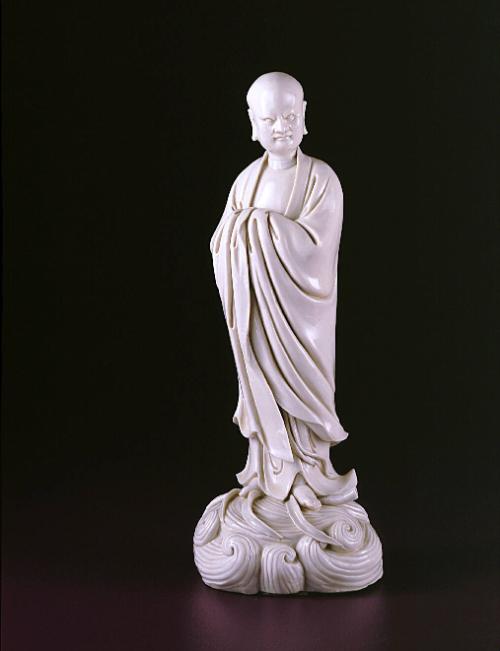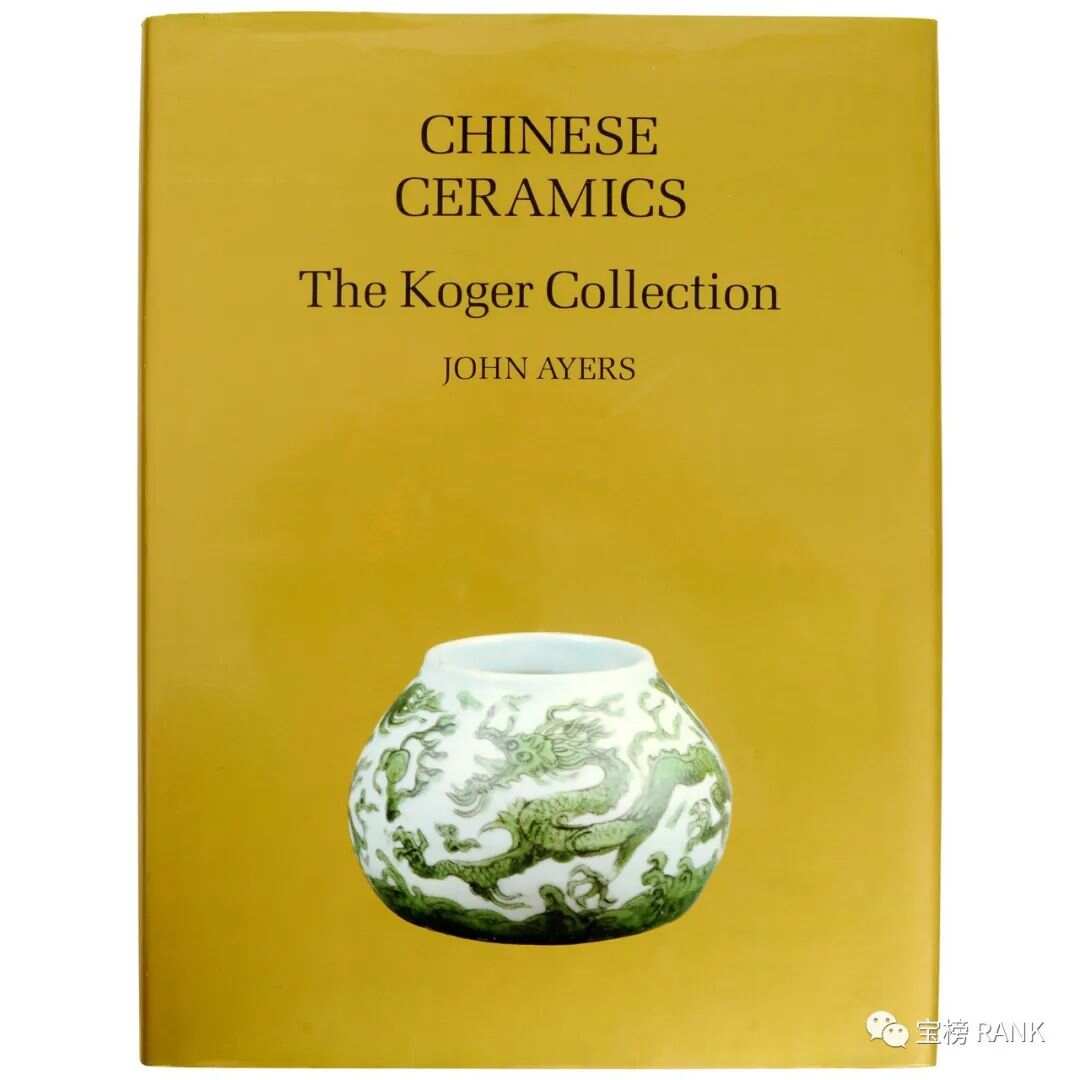席琳 (席註:這是幾年前的一篇舊作,照片的鏈接不見了,重新補上,文字和題目也略有改動,瑞玲學院是美國最好的動漫高校之一,瑞玲博物館裡的德化瓷收藏,賞心悅目,也是全美最好,值得關注)。
從佛羅里達西海岸的坦帕灣往南開,經過美麗的海濱城市薩茹蘇打,不遠處小鎮上就有一座遠近聞名的瑞玲學院和瑞玲(Ringling)博物館,瑞玲博物館裡除了有豐富的歐洲藝術品收藏之外,還收藏有141件漂亮的德化陶瓷,是Koger收藏的一部分。其中有三件,是何朝宗的作品。
The Ringling’s collection of Dehua ceramics is among the largest and most representative in the United States, gifted to the museum in 2001 by Ira and Nancy Koger. Most of the objects on view range in date from the 16th to the 18th centuries, with some pieces of more recent manufacture. While the golden age of Dehua wares may have passed, potters in the county continue to make ceramics of extremely high quality.

Damo Crossing the Water on a Reed。Date:early 17th century。Medium:Dehua ware; porcelain with transparent glaze。Dimensions: OVERALL: 11 1/4 × 4 7/16 × 3 1/2 in. (28.6 × 11.3 × 8.9 cm)。 Credit Line:Gift of Ira and Nancy Koger, 2001。Object number: SN11122.87。

This icon depicts Guanyin (Sanskrit: Avalokitesvara), a bodhisattva who embodies boundless compassion. Bodhisattva (literally “enlightened beings”) prolong their time in the mortal realm to help others overcome the obstacles toward enlightenment. Her elongated earlobes, three neck rolls, and urna (the radiant white curl of hair in the center of the forehead) indicate her sacred status. While a Buddha often wears humble attire, bodhisattva like Guanyin usually appear with jewelry, regal hairstyles, and crowns. Guanyin is one of the most widely worshiped Buddhist deities and is often revered as a protector of sailors, particularly in coastal areas like Dehua. Icons of this quality were likely made for wealthy patrons, and this one bears the seal of renowned figure modeler He Chaozong.

Guanyin Enthroned on a Lotus,Pedestal。Artist: after He Chaozong (Chinese, active ca. 1610 - 1620)。Date:early 17th century。Medium:Dehua ware; porcelain with transparent glaze。Dimensions: 15 1/8 x 7 3/8 x 5 1/4 in. (38.4 x 18.7 x 13.3 cm)。Credit Line:Gift of Ira and Nancy Koger, 2001。Object number:SN11122.81

Wearing the garb and cap of a scholar official, the god of literature Wenchang sits on a rocky pedestal holding a ruyi, a scepter for granting wishes. His robe drapes in naturalistic folds over his arms and legs, and his eyes and hands are rendered in minute detail. Small slots in his chin and upper lip allow for the addition of a beard and moustache, which could have been fashioned from horse hair. The back of this figure bears the square seal of famed Dehua figure modeler He Chaozong.

Water dropper in the form of a crab, 17th century. Dehua ware; porcelain with transparent glaze, 1 3/4 x 5 3/4 x 3 3/4 in. Gift of Ira and Nancy Koger, 2001. SN11122.164。

Ira Koger (1912 - 2004) Ira McKissick Koger was born December 5, 1912, in Charleston. He has enjoyed success in many endeavors, but real estate development has brought him fame and fortune and the opportunity to serve the communities he has called home. He is credited with creating the office park concept and, since 1957, he has designed, built, financed, and leased more than 30 office parks in the Southwest and Southeast, from Tulsa, Oklahoma, and El Paso, Texas, to Norfolk, Virginia, and Miami, Florida. The office parks embrace more than 300 buildings, producing about $150 million in annual rent. His father was a well-to-do food broker. Koger attended Mount Pleasant Academy and graduated from Boys High School in Charleston. Koger began his business career as an advertising executive and broadcaster, but his eventual success in real estate gained him wealth and his firm a listing on the New York Stock Exchange. A patron of the arts, he is nationally known as a connoisseur and collector of American impressionist paintings, English and American furniture, and ancient Chinese ceramics.
|








